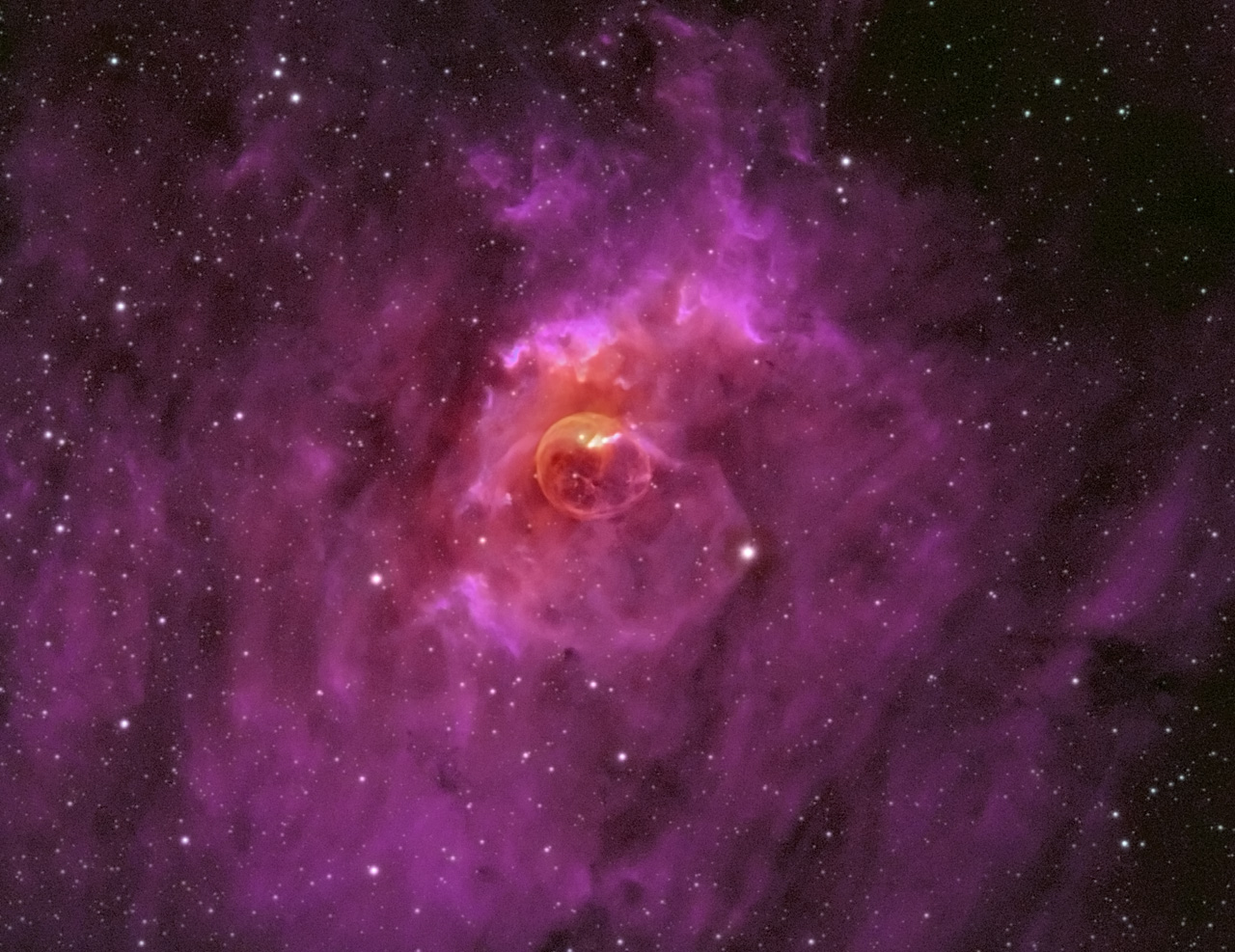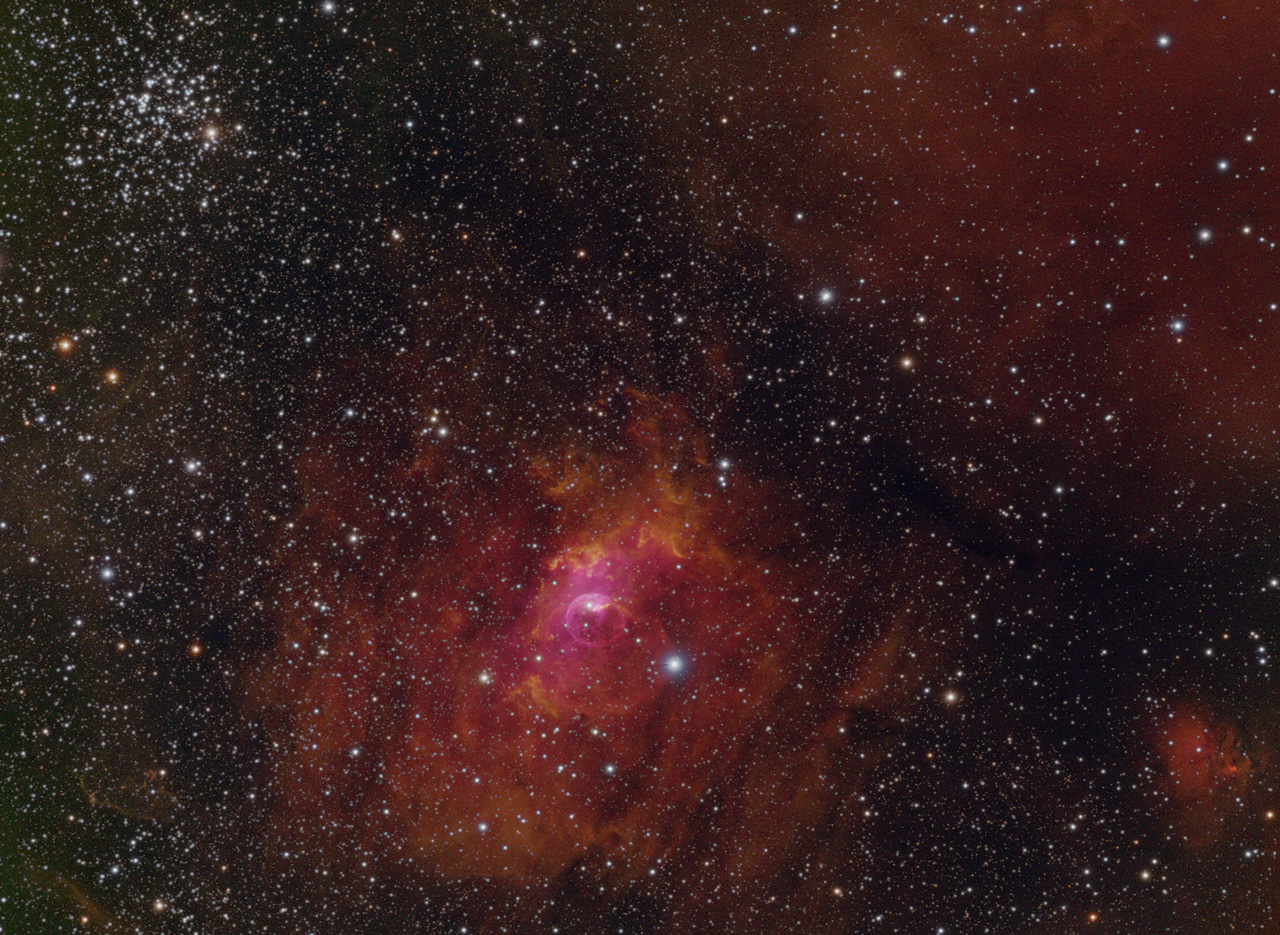For the most recent New Moon I went to my favorite dark sky site, SkyView Acres, in Goldendale, WA. Prior to that I had been capturing narrowband data of the Bubble Nebula (NGC7635) from home, so I thought I would add some RGB data from the dark sky site. I had dreams of making a glorious multi-hued portrait of this popular object, but after playing around with it for hours, I have to say that my bubble has been burst: I just couldn’t come up with a way to combine the data that looked any better than straight narrowband or straight RGB.
The above image is a tight crop taken from the narrowband version (processed as HSO). A great thing about posting images online rather than making prints is that the resolution doesn’t need to be that great, so I can crop down to a small area like this. The colors here are not very close to “natural”, and maybe not even that attractive, but they do reveal a higher concentration of oxygen around the bubble, while the predominant background is hydrogen (as is almost always the case). There is also what appears to be an outer “bubble” in hydrogen, while the sulfur channel shows relatively little detail in any of these features.
Here is the whole field of view:
This image is actually a combination of RGB and narrowband images, it just isn’t a very interesting or useful combination. Indeed, the main contribution of the narrowband data might be that it makes the colors unnatural!
The star cluster in the upper left corner is M52. Just outside the frame to the upper right is another bright nebula, NGC7538.
All data was capture with a William Optics FLT-132 refractor and ASI1600MM camera, on a Paramount MyT mount. Narrowband frames are 2.5 hours each of H-a, O-III, and S-II. Broadband data includes 1.5 hours of RGB and another 1.5 hours of luminance.
Another target I worked on at the star party was the Cave Nebula, but a couple of serious defects showed up while processing that data, so I will have to re-shoot it. Hopefully, we’ll get at least 1 more New Moon with clear skies before Winter weather sets in.

